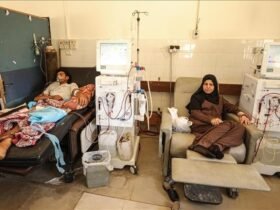Snakebites rising in South Asia
In 1950, Roald Dahl penned a short story titled “Poison,” which is often featured in children’s anthologies and delves into themes of racism against the backdrop of colonial India. The narrative revolves around a common krait, a striped snake, whose presence serves as a metaphor for the insidious nature of racism. Despite being a work of fiction, the story draws on the widespread fear of poisonous snakes in South Asian countries like India, Pakistan, Nepal, and Sri Lanka.
Snakebites in south asia
Snakebites are a significant public health concern in South Asia, with the World Health Organization (WHO) estimating that they account for nearly 70% of global snakebite-related deaths. The prevalence of venomous snakebites in the region contributes to approximately 100,000 deaths annually, with India alone reporting around 58,000 fatalities from one million cases of snakebite envenoming each year.
Data on snakebite incidents in South Asia is often incomplete, but it’s clear that the problem is severe. Pakistan saw 40,000 snakebites in 2007, resulting in 8,200 deaths, according to the WHO. Nepal similarly faces significant challenges, with an estimated 40,000 snakebite cases annually, leading to about 3,000 deaths. Sri Lanka recorded 33,000 snakebites between 2012 and 2013, resulting in 400 fatalities.
The most common venomous snakes in the region, often referred to as the “big four,” include the common krait, Russell’s viper, saw-scaled viper, and Indian viper. Additionally, species like the king cobra, green pit vipers, and checkered keelbacks are prevalent in certain areas.
Snakebites can be deadly due to the venom injected during the bite, which can lead to life-threatening conditions if not treated promptly. Different snake species have varying types of venom, ranging from neurotoxic venom found in Indian cobras and kraits to vasculotoxic venom in Russell’s vipers and saw-scaled vipers. Symptoms can range from paralysis and respiratory distress to tissue necrosis and kidney failure, depending on the type of venom.
Efforts to address snakebite incidents in South Asia are ongoing, with organizations like the WHO working to raise awareness and improve access to treatment and prevention measures. However, the complex nature of the issue, compounded by factors like climate change, underscores the need for continued vigilance and intervention to reduce snakebite-related morbidity and mortality in the region.








Leave a Reply